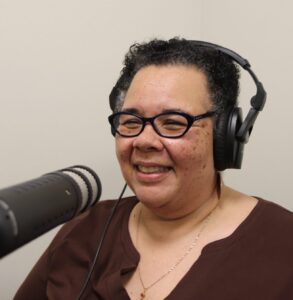
Seeing the Possibility in Students
One day my father asked my brother and me why we had stopped roller skating. In those days, roller skates were constructed out of skin-bruising, abrasive metal. The design of the skates required a metal key. By turning the metal key, the skate adjusted by lengthening or widening to fit to the child’s sneakers. Once the adjusted metal clamps were tightened on the shoe, the leather strap was buckled around the ankle. Even with the key and the straps, never was the fit precise. Notoriously and painfully, the metal skates would fly off of your foot in mid-skate thus hurling the skater into walls, into trees, into parked cars. Or, the ill-fitting skate simply tripped-up the skater and you landed on the concrete sidewalk – sometimes face first. Skating was more dangerous than it was fun. We told dad we stopped skating because the skates did not work well. We told him that they kept falling off. We told him we were tired of getting hurt. With this conversation, my brother and I were hoping for new skates – the kind that were all-in-one with the attached shoe. These better skates had a rubber attachment on the toe to help the skater slow down. I wanted the white skates and my brother wanted the black skates. My dad saw other possibilities.
I do not remember if it was hours, days or weeks after the initial conversation about the under-used skates that my dad redesigned our toys. The next time Brent and I saw our skates, Dad had turned them into scooters. Dad dismantled the skates, used found items from our basement, and his own ingenuity. Dad made three scooters. One scooter had a metal milk crate as its console, was low to the ground, and meant to be ridden on one knee. The other two were ridden while standing up – one with a wooden handle bar to grip while attempting jumps or fish-tailing. The third scooter was more like a modified skateboard that required excellent balance. All the scooters had metal wheels – no key or leather trap was needed. My brother and I, plus all the kids in our neighborhood, played with those scooters for years and years. As I look back, my dad’s nurturing of the possible was quite remarkable.
My Dad had a thing about wheels for children. Dad believed children should be able to go! They should be able to travel, to have adventures, to explore – to see what there was to see. For him, wheels were a way for children to experience the world with imagination and possibility. Dad thought children should be in motion; he thought a child’s impulse to go! should be kindled. The rule in our house was that once your feet could reach the brake and gas pedals and you could see over the steering wheel – you could drive the car. My brother and I started driving when we were age 10 and 11, respectively.
Dad’s ethic of go! did not stop with his parenting but was part of his vocational sensibilities. Dad was a school psychologist, special education teacher and reading specialist. He was, for more than thirty years, employed by the Philadelphia Public Schools. At his retirement party, I heard his co-workers tell story after story after story of the ways my father rescued children from incorrect placements in remedial education classes. Countless times, when other psychologists would deem that a child had no possibility to learn, to read, to excel – Dad saw possibility in the child. My father retested children who other colleagues had previously tested. Often, his report would be that the children had a higher IQ and fewer learning obstacles than previously diagnosed. My father was regularly called as an expert witness in Family Court to dispute the misdiagnosis and misplacement of children in private educational systems. My father was an advocate for children because he could see them. Dad was known by his colleagues to be able to see the possibility in even the most dulled child.
I am not saying that my dad was optimistic or hopeful or even cheerful. Most days he was none of these things. What dad modeled for our family, and gave to the children he worked for in the public schools, was much more substantive. My dad was imaginative. He would see possibility – in skates and in children. He could see children labeled as retarded or learning disabled as being productive, normal, healthy, contributing members of our community with value, worth and dignity.
An unwritten responsibility of teaching is to see the possibility in students that they cannot see in themselves. Seeing the possibility in students is not a mystical gift reserved for only a few intuitive teachers. Seeing the possibility in students is about thinking up options, designing opportunities, engineering alternatives, redesigning what is offered, resisting rules that would stymy and oppression, and setting people in motion. It is about providing wheels and the permission to go! Seeing the possibility in students is about looking at the student, then looking beyond the student knowing the wheels you provide are taking them into their future and it is into that future that they must go.
Nice blog author. Thank you. Keep it up.